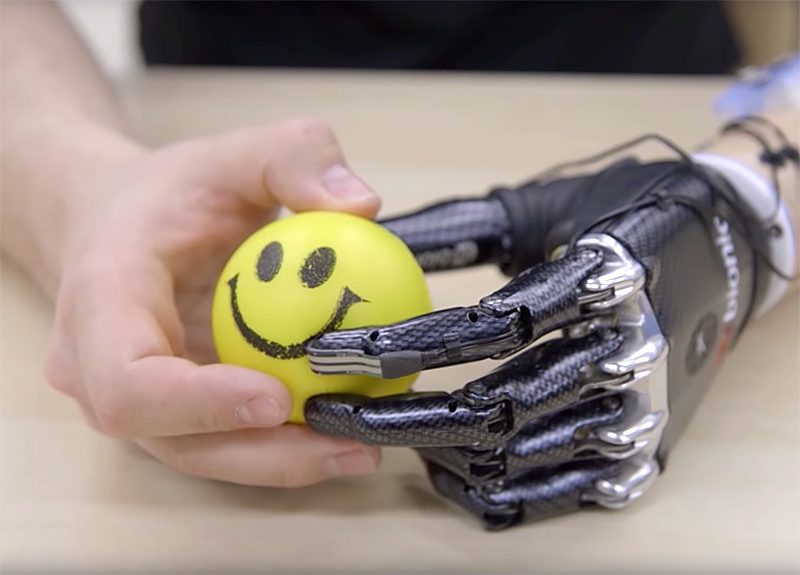For most of us, reaching for a cup of coffee is a natural motion performed without thought. For a person with a prosthetic limb, it involves a complex sequence of motions. Researchers at the BLINC Lab - Bionic Limbs for Improved Natural Control - are using AI to help create "smart" bionic limbs that operate more naturally with a person's body.
The Problem
Modern robotic prosthetics are sophisticated yet frustratingly difficult for people to use in daily life.“They have a robot for an arm, but it's really hard for them to tell it what to do,” says Patrick Pilarski, '09 PhD, an AI researcher and Canada Research Chair in the Department of Medicine. Intelligent technology could increase the success rate of prosthetics and help people live fuller lives.
The AI Solution
Using a branch of AI called reinforcement learning, the research team is training prosthetics to track patterns in a person's movements and eventually predict the motions. Called adaptive switching technology, it allows a person to communicate with the device. "That's the bit where AI can help. It's the 'brains' of the operation, so to speak," says Pilarski, who also works with the U of A's Alberta Machine Intelligence Institute.
What's Next?
Amputees have tested the technology in lab settings and the results have been promising. Pilarski hopes to be able to share the open-source code with the world for free within 12 months. "Our goal is to take technology that has shown success in a research setting and put it in a form that companies, developers and designers can use as a foundation for building the prosthetic technologies of tomorrow."
Beyond Human Ability
While the current research is focused on building better prosthetics to replace the abilities people have lost through injury or illness, the "big grand slam," as Pilarksi calls it, would be to use technology to help people become "super-abled" - to do more than they could before. "The seamless communication, the interaction between humans and machines to solve problems together, to make the world a better place - this is one of the biggest challenges remaining to our species."
Patrick Pilarski is a Canada Research Chair in Machine Intelligence for Rehabilitation and is an assistant professor in the Division of Physical Medicine and Rehabilitation, Department of Medicine. He also is a principal investigator with the Alberta Machine Intelligence Institute and the Reinforcement Learning and Artificial Intelligence Laboratory.

We at New Trail welcome your comments. Robust debate and criticism are encouraged, provided it is respectful. We reserve the right to reject comments, images or links that attack ethnicity, nationality, religion, gender or sexual orientation; that include offensive language, threats, spam; are fraudulent or defamatory; infringe on copyright or trademarks; and that just generally aren’t very nice. Discussion is monitored and violation of these guidelines will result in comments being disabled.